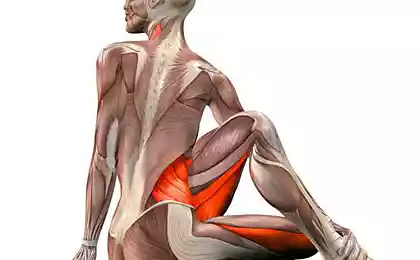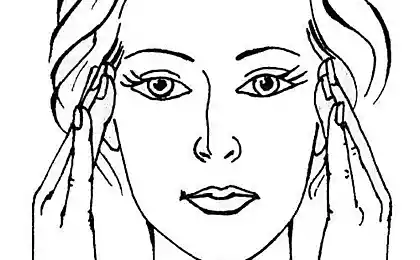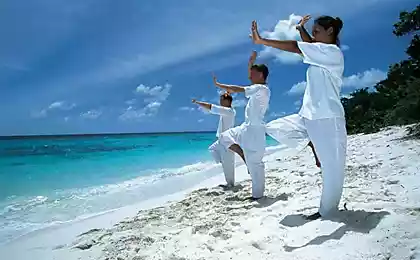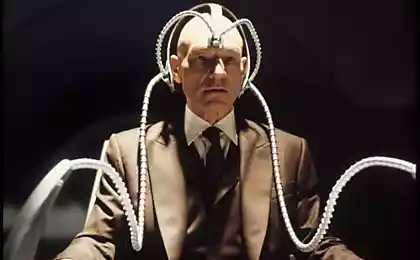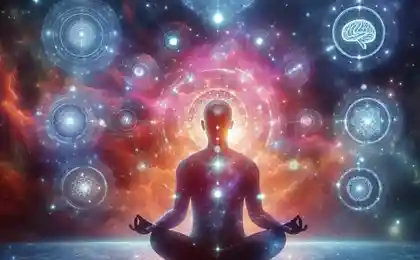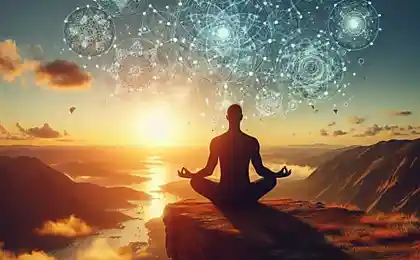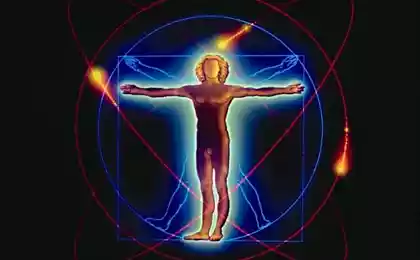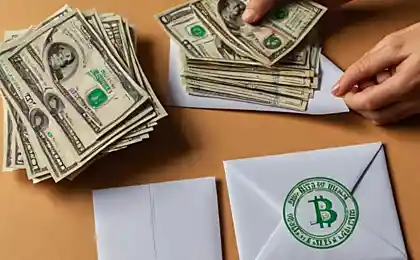589
A simple method of self-discovery - practical exercise
There are many ways, methods and techniques of self-knowledge, one of which is meditation, and the exercise of self-knowledge is one of the easiest methods.
This exercise does not require any special training or any special conditions – it is sufficient to understand the essence of the method of self-knowledge, outlined in this article.
Of course, at first it is better to carry in a relaxed atmosphere that you will not be distracted by talking or something else. This exercise can also be done while walking, in public transport or at work – in parallel to other activities, if you can combine these things.
A few words about self-knowledge
There are different techniques and methods, which have different goals. It is an exercise in self-knowledge contributes to self-knowledge, which means, in essence, achieving the highest goal of human life on Earth.
To know yourself means to understand your true nature, the nature of the soul, pure consciousness. According to the Scriptures, the soul is pure consciousness, part and parcel of God, it is eternal, full of knowledge and bliss, and always clean. However, these qualities of the soul (our higher self, pure consciousness) are hidden by the illusory identification with the material body, mind, emotions, and playing roles that person plays in society, and meditation allows you to see the illusory nature of these identifications. Thus, getting rid of illusions, man may know himself – his eternal, spiritual nature, full of knowledge and bliss.
The fact that human nature is not material but spiritual, is proved by the fact that a man can never be satisfied with transient material objects and pleasures. The nature of the soul is happiness, eternity and knowledge, and nothing of the material world can be a pretty good substitute for eternity, happiness and wisdom. The very desire to be eternally happy and wise is the pursuit itself, the realization of your true nature.
This exercise is a fairly simple method of self-discovery. It can be called a meditation on dis-identification, that is, the elimination of the illusory conception of life.
The exercise consists of several steps, each of which has two elements, observation and reflection. It is a simple method that can be used by everyone.
Step 1. REALIZE THAT YOU ARE NOT THE BODY.
This awareness is achieved through observation and reflection. No need to hurry.
You see the body, perceive it somehow – this fact will not argue. When did you realize that you take your body, remember it is a scientifically proven fact of physics – the observer cannot be what it observes. That is, if you have something to see (perceive), it is obvious that you are not this, you would otherwise be unable to observe it. This scientific fact confirmed by virtually all religions, spiritual practices and sages.
Then there are the thoughts: if I see body, I mean something different from this body. Thus the awareness of "I am not my body", then there may be a logical question "Who am I then if not the body?". This is the first step in meditation on the self. We should not expect that the first time you will receive a full dis-identification with the body, but the level of awareness on this issue will increase.
STEP 2. REALIZE THAT YOU DON'T MIND (NOT MIND).
Works the same way – through observation and reflection.
The mind, the thinking mechanism, consists of thoughts. At the moment when no thoughts, no mind. You are aware of the process of thinking, observing your thoughts and thus are very different from those thoughts.
Desire also belong to the mind, as it arise. So you can also know that, in fact, have nothing in common with except for the fact that watching their appearance and disappearance.
This is a more difficult step than the first, because the nature of the mind is more subtle than the nature of the body (the mind and the body are composed of different energies). The nature of the mind closer to the nature of the soul, than the nature of the gross material body.
But just watching the mind, i.e., thoughts occurring, and are increasingly realizing that the observed is not the observer, the meditator person deepens in self-knowledge, and he may be the next logical question: "If I don't mind, then who am I?"
STEP 3. REALIZE THAT YOU ARE NOT THE EMOTIONS
Is performed in exactly the same way – through observation and reflection.
Emotions belong to the mind, but for convenience they can be considered separately. Emotions or feelings, like thoughts, appear and disappear, and you can observe (to perceive, to realize). Just watch how they appear, change and disappear, realize them as something temporary. They come and go like thoughts, and you remain. And here again the question arises, "if I am the observer of the senses and, therefore, are not, who am I?"
Completing the third step of the exercise, the meditator even more immersed in your true nature, and the purpose of this method of self-discovery is getting closer.
So, it turns out that I am not the body, I don't mind, I'm not emotions. I see all these transient things. Everything changes, and I remain an observer. What I represent as an observer?
STEP 4. REALIZE THAT ALL THE IDENTIFICATION ABOUT
In this step exercises a person can analyze in detail the ideas, such as "I am spirit", "I am soul" and other such, which are more or less clear for the mind, but, in fact, did not really explain and address not bring.
As if you yourself are not named, what would be the characteristics yourself or attributed, this will not last long – you will feel that here something not – as the observer is not the observed. If you say you're a spirit or a soul, then who will nabludat this spirit or soul who calls himself this?
All identification is temporary, and therefore false. How would you like to be called anything – it will all be temporary of observable labels generated by the mind.
The fourth step is the last in this exercise and the most difficult, and the mind will not be able to complete it. Self-knowledge, that is knowledge of yourself as pure consciousness, without labels and identity, it may happen that they say, by the Will of God, when the mind comes to a standstill and shut off because of their incompetence in this matter.
Then disappear all the identifications you don't consider yourself someone or something as opposed to something else. There is no identification, no opposition, no duality. Is what is happening.
This is described in different words: "the Will of God," "Things happen, Events occur, Things are done", "Stream of perceptions", "the divine game", etc. All these descriptions, of course, interesting for the mind, but the mind cannot properly understand, as it works in duality, and we are trying to describe nonduality. Therefore, the descriptions of little use.
The last 4th step exercises on self-knowledge is the understanding that all identifications are false, illusory; and it is the maximum that can be understood by the mind (that is, using any method of self-knowledge). The mind does not work to cross the face of duality (as he creates this duality), this can happen only "by the Will of God."
The quality and quantity of exercises on self-knowledge
Has value and quality, and the number of running exercises.
Each new round of the exercise (consistent through all steps), brings self-understanding – but provided that done efficiently. Here we need the interest and desire to know yourself as well as your persistence in trying to deal with this issue. The mere repetition of phrases like "I see the body I mean no body..." (affirmation) is of little use if there is no interest and sincere desire of self-discovery.
On the other hand, it is important in the sense that it is not necessary for a month to be stuck in the first step, trying to get it complete dis-identification with the body. This will not happen. Worked with first step got deeper (or at least more "fresh", updated) understanding, and moved on to the second step.
Every man for himself needs to feel when to go to the next step. If you do not feel the moment when you can proceed to the next step, use observation and reflection in each step for, say 5-15 minutes. Thus, the exercise can be done in 20 minutes or an hour. Someone will take an hour or more, someone less than 20 minutes – it individually.
Even if you do this exercise as an affirmation (that is, very little observation and reflection, but more as repetition of phrases), and only for 5 minutes a day, but regularly, with interest and desire to know yourself, it can also contribute to rabotodatelei and self-knowledge.
Performing the exercise step by step, circle by circle, understanding will deepen, which means progress in the application of this method of self-discovery. If this meditation at some point ceased to give a deeper understanding and awareness of the falsity of the designation has not yet been achieved, perhaps, if the sense to look for other methods or techniques of self-discovery. Or to understand more deeply some of the steps. This can also help reading the relevant literature.
This exercise is a philosophical method of self-discovery, based on observation and reflection. He, like all other methods of self-discovery has its pros and cons.

Source: esoteric-land.ru/publ/tekhniki_praktiki/uprazhnenie_na_samopoznanie_prostoj_metod_samopoznanija_v_meditacii/5-1-0-74






